Sewing with Clear Thread: Pro Tips for Invisible Seams and Perfect Projects
Are you a DIY sewer, hobbyist, crafter, or small business owner striving for professional-looking results? Visible stitches and difficult color matching can detract from your project’s aesthetics. In situations requiring invisible seams, especially on delicate fabrics or repairs, clear thread becomes a game-changer. This article provides practical tips for sewing with clear thread, empowering you to achieve invisible seams and professional finishes, elevating the quality of your sewing projects.
1. Understanding clear thread: The secret to invisible seams
1.1. What is clear thread and why use it?
Clear thread, also known as invisible, transparent, or monofilament thread, is a specialized sewing tool designed to create stitches that are as hidden as possible. Its main purpose is to create an unobtrusive sewing experience.
This unique characteristic allows it to blend seamlessly with virtually any fabric color, eliminating the need for time-consuming color matching and streamlining the sewing process. Clear thread is ideal for projects where subtle or hidden stitching is desired, resulting in a clean, professional finish. Typically, clear thread is made from synthetic monofilaments like nylon or polyester.
Expert advice: While clear thread is excellent for its invisibility, proper usage is key to avoid issues. It is a specialized tool, not a universal thread.
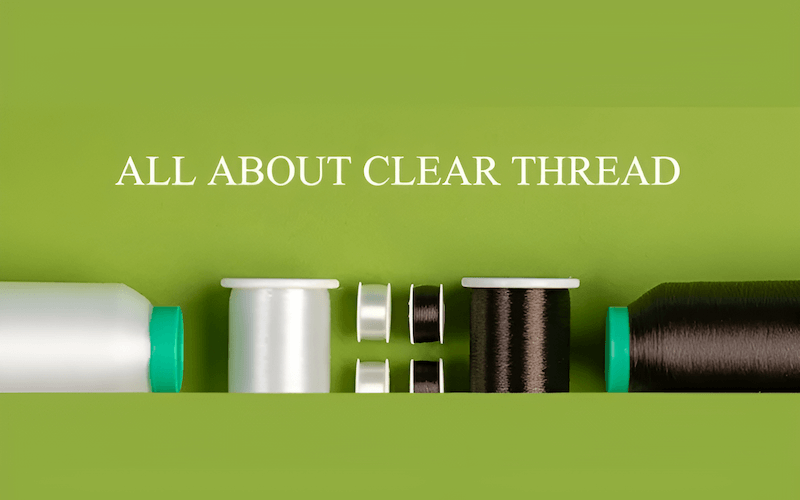
1.2. Materials matter: Nylon vs. Polyester clear thread
Nylon and Polyester are the two primary materials used for clear thread, each with their own properties. Nylon thread is lightweight and very flexible, often feeling softer, and is best suited for delicate fabrics like lace, tulle, and chiffon where softness and flexibility are paramount. Nylon is also potentially more “invisible” due to its higher flexibility and ability to conform to the fabric.
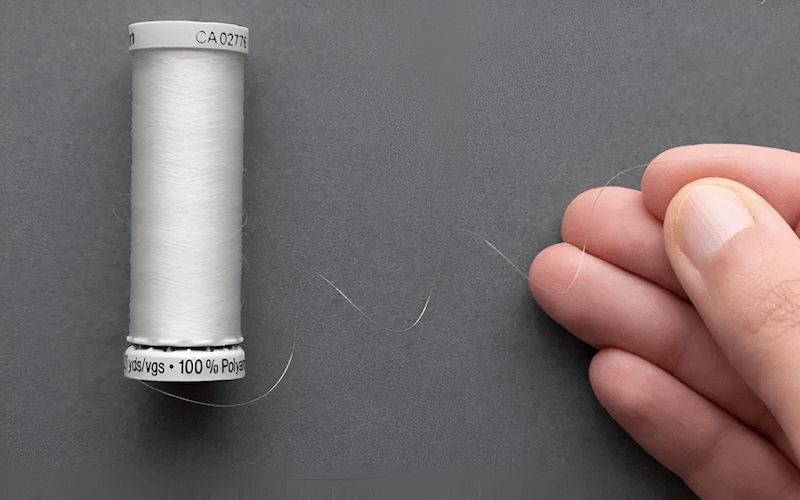
However, nylon is less heat resistant, which can discolor or weaken over time, especially with exposure to heat or sunlight. Polyester thread, on the other hand, is stronger and less stretchy than nylon, offering more robust seams, making it better suited for heavier fabrics such as denim and upholstery, as well as projects needing more durability.
It has higher heat and stretch resistance and is more resistant to UV light and higher temperatures, so it is less likely to become brittle or yellow with age. Polyester is available in both clear and smoke colors to suit different fabric tones.
Expert advice: It is best to choose clear thread based on your specific fabric and project needs. Polyester is safer for garments that will be frequently washed and ironed, whereas nylon offers superior invisibility for delicate items that aren’t heavily stressed.
1.3. Beyond the basics: Elastic and smoke clear thread
Beyond the standard clear monofilament, there are specialized variations. Elastic clear thread, also known as stretch clear thread, is a stretchy version designed for projects requiring a flexible finish. This makes it well-suited for swimwear, costumes, and stretch fabrics.
Smoke-colored clear thread exists because a perfectly clear monofilament can sometimes appear too shiny, particularly on dark fabrics, potentially making stitches more visible than desired. Smoke thread is specifically designed for use with dark fabrics, to provide a less reflective, more truly invisible finish.
Expert Advice: Use smoke thread when working with darker materials to avoid unwanted shine.
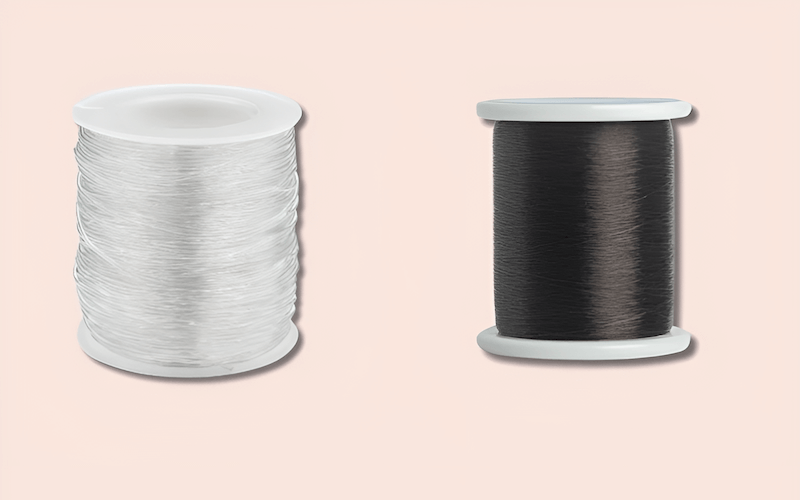
2. Mastering sewing techniques with clear thread: Pro tips & tricks
2.1. Preparation is key: Setting up your sewing machine
Practicing on scrap fabric before starting is essential. Choose a needle size that is smaller than you might typically use; a size 9/70 or 70/10 needle is generally best for lighter fabrics, and a size 11/90 or 90/11 for heavier fabrics.
The smaller needle size minimizes the hole in the fabric, making it less noticeable with clear thread and providing better control. If your sewing machine lacks an automated needle threader, make threading the needle easier by using a dark permanent marker to color the tip of the clear thread.
Clear thread often requires different tension settings than regular thread; start with the top thread tension as low as it will go and increase it slowly until stitches form correctly and look balanced. Wind bobbins slowly, especially if using clear thread in the bobbin. Winding too fast can stretch the thread.
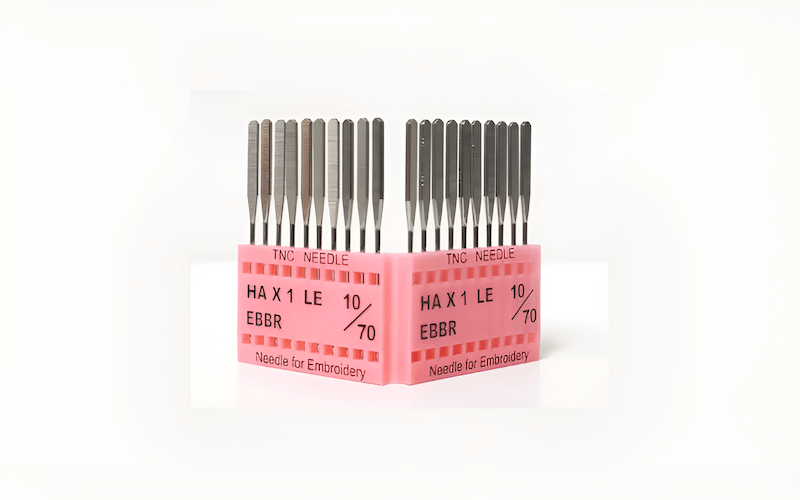
2.2. Sewing best practices for invisible results
Locking stitches with backstitching at the beginning and end of every seam is absolutely necessary with clear thread, which is more prone to pulling free if not properly secured, which ensures the seam won’t unravel. Always double-check the thread path on your sewing machine before starting.
Ensure the thread is correctly routed through all tension discs, guides, and the take-up lever. Missed loops or guides can lead to tangles. Sewing with slow and steady stitches is highly recommended, and reduces the risk of thread breakage and ensures cleaner, more controlled stitches overall. If thread breakage persists, try slightly loosening the top tension further or using a thread lubricant to help the thread glide smoothly.
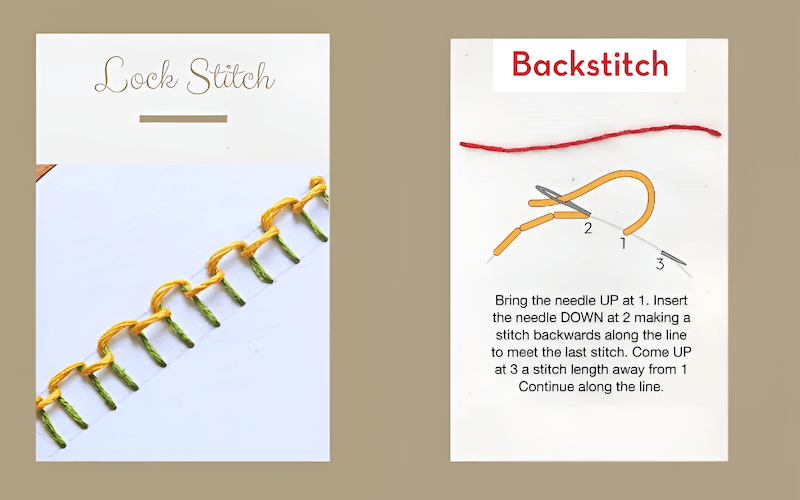
3. Project ideas & applications: Where clear thread shines
3.1. Unlocking project potential: Versatile uses of clear thread
Clear thread is an invaluable tool in a multitude of projects. It is especially useful in quilting, as a top thread, for intricate quilting patterns on multicolored or scrap quilts, where matching thread colors throughout would be impractical and visually cluttered.
It is particularly effective for ditch quilting and echo quilting, where you want the quilting texture to stand out, not the thread itself. Clear thread is also perfect for attaching appliques invisibly to various backgrounds. The advantage is that the applique fabric itself becomes the focal point.
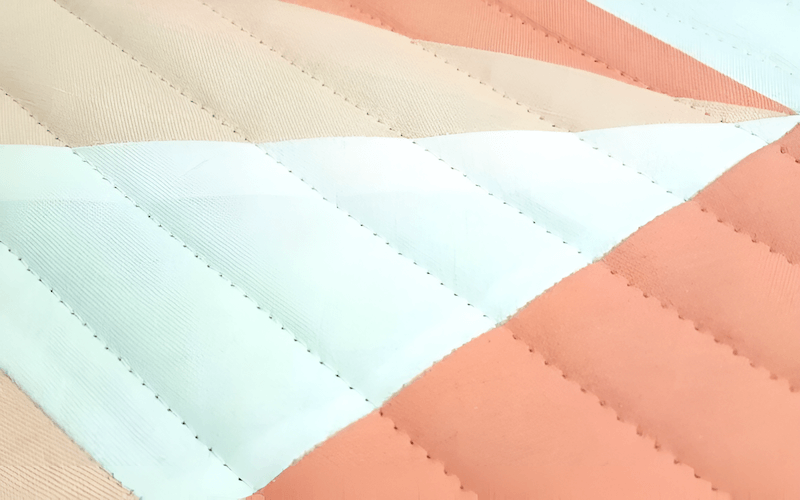
It works exceptionally well for hemming sheer or lightweight fabrics like chiffon, tulle, organza, and lace, and creating virtually invisible hems that don’t detract from the delicate nature of the fabric. Clear thread is invaluable for creating invisible hems in tailored garments and curtains, especially when working with light or medium-weight fabrics, and it can also be used for quick repairs where matching thread is not available.
It is a great option for re-attaching buttons securely when matching thread isn’t available; clear thread blends regardless of the button or garment color. It is also ideal for securely attaching sequins, beads, and other decorative embellishments to garments, costumes, and crafts, since the clear thread stitches become virtually invisible.
3.2. Project inspiration: Get creative with invisible stitching
Consider a few project ideas to spark creativity. Achieve a professional finish by inserting zippers into delicate garment fabrics with nearly invisible stitching lines. Use clear thread to attach appliques in a way that makes them appear to float on the fabric surface, with no visible means of attachment. Invisibly attach delicate straps, ribbons, or trims to garments.
Construct reversible clothing items where the seams are neat and invisible on both sides, and use clear thread to add intricate embellishments to costumes and dancewear. Think beyond these examples and explore how invisible stitching can enhance your unique sewing projects. Experiment and discover new and innovative uses for clear thread in your own creative endeavors.
4. Caring for your clear thread projects: ensuring longevity
Proper post-sewing care is important. Carefully trim any excess thread tails after sewing. Use sharp, small scissors or thread snips to trim close to the fabric without accidentally cutting the seam, to ensure a clean and professional finish.
Exercise caution with heat, especially with nylon clear thread. Use low heat settings only when ironing projects sewn with clear thread, and always use a pressing cloth between the iron and the fabric to protect the clear thread from direct heat, and to prevent melting or damage. Note that polyester clear thread is more heat-resistant than nylon.
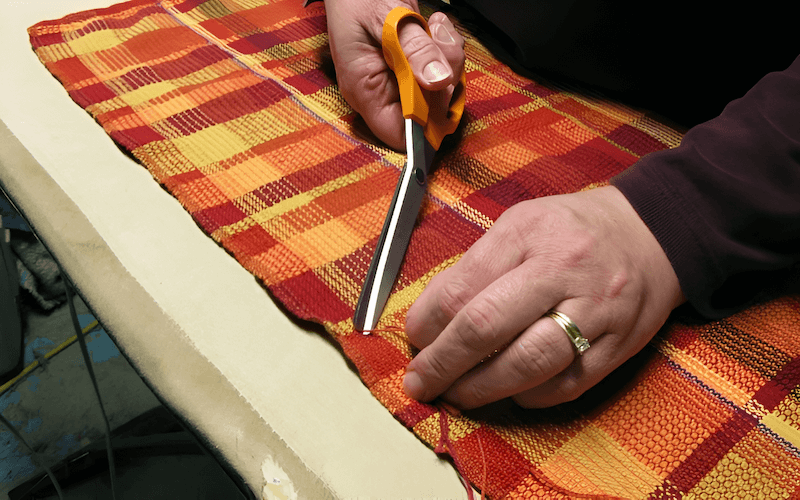
It is usually best to air dry items. If tumble drying is necessary, use a low heat setting. Prolonged exposure to sunlight and heat can degrade synthetic threads like nylon and polyester, causing them to become weakened. Store spools away from direct sunlight and sources of high heat. Cool, dark storage is ideal for maintaining thread quality and longevity.
5. FAQs about sewing with clear thread
5.1. Is clear thread suitable for all fabrics?
No, while versatile for invisible seams, it’s not ideal for all sewing. Best for projects prioritizing hidden stitches. Not recommended for heavy-duty seams needing strong, visible stitching. Choose nylon for delicate fabrics, polyester for more robust materials.
5.2. Why is my clear thread breaking when I sew?
Common causes: too high thread tension, sewing too fast, dull needle, low-quality thread.
Solutions: loosen tension, slow down sewing speed, use a new, sharp needle, ensure you are using a reputable brand of clear thread.
5.3. Can I use clear thread in the bobbin and the top thread?
Yes, but trickier, especially for beginners. Regular bobbin thread is easier. If using clear thread in the bobbin, wind slowly and adjust bobbin tension (consider a separate bobbin case for fine-tuning).
5.4. What needle size should I use with clear thread?
Smaller needles are better: size 70/10 or 80/12. Universal or microtex needles work well. Smaller size minimizes fabric holes and improves thread control.
5.5. How do I prevent clear thread from being too shiny?
For dark fabrics, use smoke-colored clear thread. Matte finish clear thread might also be available. Check lighting – sometimes sewing light exaggerates shine.
Packlove specializes in creating high-quality, custom clothing labels and tags. With over eight years in the garment industry, we understand the importance of the right label. Quality labels and tags are like the perfect finishing touch, enhancing the professional look of well-sewn projects. We offer a wide range of options, including woven labels, printed labels, hang tags, heat transfer labels, and rubber labels, to meet your unique branding needs.
Custom labels and tags provide significant benefits. They elevate handmade items, reinforce your brand’s identity for small businesses, and provide essential garment information such as size and care instructions. Just like clear thread helps create flawless seams, our custom labels and tags help you put the perfect finishing touch on your creations.
Whether you’re making quilts, garments, or crafts, Packlove provides high-quality labeling solutions to match your sewing expertise. Visit our website at https://mypacklove.com/ or contact us at [email protected] to explore our options and contact us for a free consultation.
Read more:
Mastering the art of sewing with clear thread is a valuable skill that elevates your projects, creating invisible seams and professional finishes. From understanding the different types of clear thread to mastering the necessary techniques and troubleshooting common problems, this guide equips you with the knowledge and confidence to achieve exceptional results.
Incorporating these expert tips, you can unlock new creative possibilities and enhance the overall quality and aesthetic appeal of your sewing endeavors. Embrace experimentation, practice consistently, and enjoy the satisfaction of creating truly seamless and professional-looking projects.






















